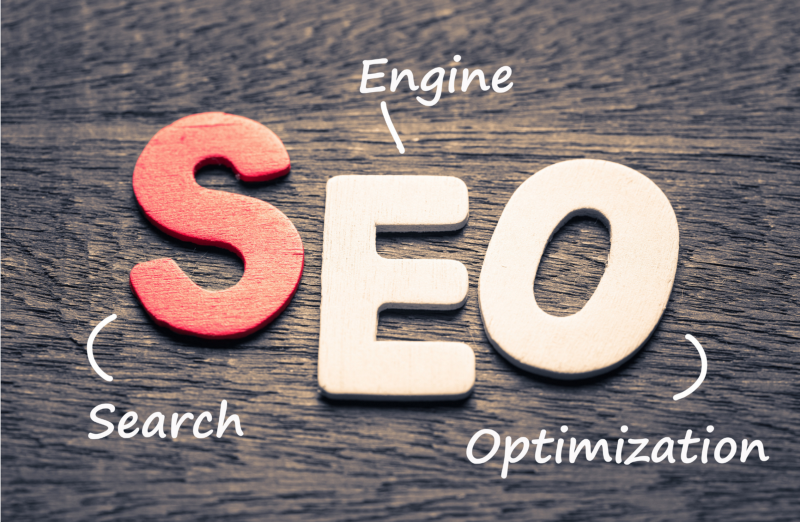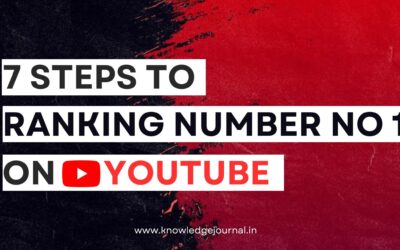In today’s digital age, having a strong online presence is critical for businesses to succeed. One of the most important aspects of building and maintaining an online presence is Search Engine Optimization (SEO).
SEO is the process of optimizing your website and its content to increase its visibility and ranking on search engine results pages (SERPs). In this article, we will provide a complete step-by-step guide to SEO, covering everything from the basics to advanced techniques.
What is SEO?
According to MOZ,
SEO Stands for “search engine optimization”. Basically, it is a practice of quality and quantity of traffic on your website through organic search engine results. And when people search a Query in search engines like Google, Bing, and other search engines for products or services related to your business, it increases the visibility of your brand and business through non-paid (also known as “organic”) search engine results.
SEO involves various techniques, including keyword research, content optimization, link building, and technical optimization, to make your website more attractive to search engines.
Why is SEO important?
SEO is essential for businesses to succeed online. It helps businesses increase their visibility and reach a larger audience, which can lead to more traffic, leads, and conversions. By optimizing your website for search engines, you can ensure that your target audience can find you when they search for relevant keywords or phrases.
How do search engines work?
Search engines use complex algorithms to crawl and index websites and their content. When a user types a query into the search engine, the algorithm analyzes the indexed content and ranks the results based on relevance, authority, and other factors. The goal of SEO is to optimize your website and its content to rank higher on these search engine results pages for relevant queries.
Types of SEO
There are three main types of SEO:
- On-page SEO: On-page SEO focuses on optimizing individual web pages to rank higher and earn more relevant traffic in search engines. This includes optimizing content, headings, meta descriptions, images, and other elements on a web page.
- Off-page SEO: Off-page SEO refers to all the activities that take place outside of your website to improve its ranking on search engines. This includes link building, social media marketing, and other forms of online promotion.
- Technical SEO: Technical SEO focuses on the technical aspects of your website, such as website speed, mobile-friendliness, and schema markup, to improve its performance and ranking on search engines.
The above three types of SEO are used for websites and blogs, but they also apply to three subtypes of SEO:
- Local SEO:
- Image SEO:
- Video SEO:
On-page SEO
On-page SEO is an important aspect of SEO, and it includes various techniques to optimize individual web pages for search engines. Some of the key on-page SEO techniques include:
- Keyword research: Identifying relevant keywords and phrases that your target audience uses to find your products or services.
- Content optimization: Creating high-quality, engaging, and informative content that targets your relevant keywords.
- Heading tags: Use appropriate heading tags (H1, H2, H3, etc.) to structure your content and make it more readable for both users and search engines.
- Meta descriptions: Write compelling and informative meta descriptions that accurately describe the content of your web pages.
- Image optimization: Optimizing images by adding appropriate alt tags, captions, and filenames.
Off-page SEO
Off-page SEO is an important part of SEO that focuses on promoting your website and building its authority and credibility outside of your website. Some of the key off-page SEO techniques include:
- Link building: Building high-quality backlinks from other websites to improve your website’s authority and credibility.
- Social media marketing: Promoting your content and engaging with your target audience on social media platforms like Facebook, Twitter, and Instagram.
- Guest blogging: Write high-quality guest posts for other blogs in your niche to increase your brand visibility and reach a new audience.
Technical SEO
Technical SEO involves optimizing the technical aspects of your website to improve its performance and ranking on search engines. Some of the key technical SEO techniques include:
- Website speed optimization: Improving website speed by compressing images, minifying CSS and JavaScript files, and using a content delivery network (CDN).
- Mobile-friendliness: Ensuring that your website is mobile-friendly and loads properly on mobile devices.
- Schema markup: Adding schema markup to your website to help search engines better understand your content and improve its visibility on SERPs.
Here is a step-by-step guide to SEO:
There are many different techniques that can be used to improve a website’s SEO, including:
1. Keyword Research:
Keyword research is a critical aspect of SEO, as it helps you identify relevant keywords and phrases that your target audience uses to find your products or services.
Identifying the most relevant and popular keywords for your website and using them strategically in the website’s content and meta tags to help search engines understand what the site is about. Some of the key steps involved in keyword research include:
- Identifying seed keywords: Start with broad keywords that are relevant to your business.
- Conducting keyword research: Using keyword research tools like Google Keyword Planner or Ahrefs to identify relevant keywords and their search volume.
- Analyzing keyword competition: Evaluating the competition for each keyword and selecting the most relevant and low-competition keywords.
2. On-Page Optimization:
Once you have identified the target keywords, you can start optimizing your web pages for those keywords. On-page optimization includes optimizing the title tags, meta descriptions, heading tags, images, and internal links.
Ensuring that the website’s pages are structured in a way that is easy for search engines to understand and crawl. This includes things like using header tags, using descriptive and relevant titles and descriptions for pages and images and using alt tags for images.
3. Content Creation:
Creating high-quality, engaging, and informative content is essential for SEO. Some of the key factors to consider when creating content include:
- Relevance: Creating content that is relevant to your target audience and addresses their needs and pain points.
- Length: Creating long-form content that is at least 1,500 words long, as it tends to rank higher on search engines.
- Formatting: Using headings, subheadings, bullet points, and images to make your content more readable and engaging.
4. Technical SEO:
Ensuring that the website is well-coded, has a fast loading speed, and is easy to use on mobile devices.
5. Optimizing website structure and design:
Optimizing your website’s structure and design is critical for SEO. Some of the key factors to consider include:
- Website architecture: Ensuring that your website has a clear and logical structure that makes it easy for users and search engines to navigate.
- User experience: Creating a positive user experience by ensuring that your website is easy to use, loads quickly, and is mobile-friendly.
- Internal linking: Linking to relevant pages within your website to improve its structure and help search engines better understand your content.
6. Link Building:
Off-page SEO is all about link building. The more high-quality backlinks you have pointing to your website, the higher your website will rank in search engines. Building high-quality backlinks from other websites are essential for SEO.
Some of the key factors to consider when building backlinks include:
- Relevance: Building backlinks from relevant and authoritative websites in your niche.
- Quality: Building high-quality backlinks from reputable websites that have high domain authority.
- Anchor text: Using relevant and descriptive anchor text to help search engines understand the context of the backlink.
7. Social Media Marketing:
Social media can be a powerful tool for SEO. Sharing your content on social media platforms can help increase visibility and drive traffic to your website.
8. Monitoring and Analytics:
Monitoring your website’s traffic and analytics is crucial to understanding how your SEO campaign is performing. Use tools like Google Analytics to track your website’s performance and make adjustments to your SEO strategy as needed.
By following best practices for SEO, you can help your website rank higher in search engine results and attract more qualified traffic. This can lead to more visibility, more leads, and ultimately more sales for your business.
Common SEO mistakes to avoid
Here are some common SEO mistakes to avoid:
- Keyword Stuffing: Overusing keywords in your content or meta tags can lead to penalties from search engines.
- Ignoring Mobile Optimization: With the majority of searches being done on mobile devices, having a mobile-friendly website is crucial for SEO.
- Duplicate Content: Using duplicate content can lead to search engine penalties and hurt your website’s rankings.
- Slow Loading Speed: Slow loading speed can lead to a poor user experience and negatively impact your search engine rankings.
- Ignoring On-page SEO: Neglecting on-page SEO elements like title tags, meta descriptions, and header tags can hurt your website’s visibility in search results.
- Poor Quality Content: Low-quality content that is not relevant or helpful to the user can hurt your website’s SEO and reduce engagement.
- Neglecting Internal Linking: Internal linking can help search engines better understand the structure of your website and improve user experience.
- Overlooking Technical SEO: Technical SEO elements like crawlability, indexing, and site architecture are crucial for search engine visibility and should not be ignored.
- Ignoring Analytics: Regularly monitoring your website’s analytics can help you identify areas for improvement and make data-driven decisions to improve your SEO.
- Neglecting Local SEO: If your business relies on local customers, neglecting local SEO can hurt your visibility in local search results.
Conclusion:
In conclusion, SEO is a complex process that involves many different factors. By following the steps outlined in this guide, you can improve your website’s search engine rankings and drive more traffic to your website.
FAQs
Q1. What is the difference between on-page and off-page SEO?
On-page SEO refers to optimizing elements on your website, while off-page SEO refers to optimization tactics that take place outside of your website.
Q2. How long does it take for SEO to work?
The time it takes for SEO to work varies depending on the specific situation and goals, but it typically takes several months to see significant results.
Q3. What are backlinks, and why are they important for SEO?
Backlinks are links from other websites that point to your website. They are important for SEO because they signal to search engines that other websites find your content valuable and trustworthy.
Q4. Can SEO be done in-house or should I hire an agency?
SEO can be done in-house or by hiring an agency, depending on your resources and expertise. Both options have their advantages and disadvantages.
Q5. Is SEO the same as SEM?
SEO and SEM are related but different. SEO is the practice of optimizing your website to rank higher in search engine results pages (SERPs), while SEM includes all forms of paid advertising on search engines, including paid search ads and display ads.



0 Comments